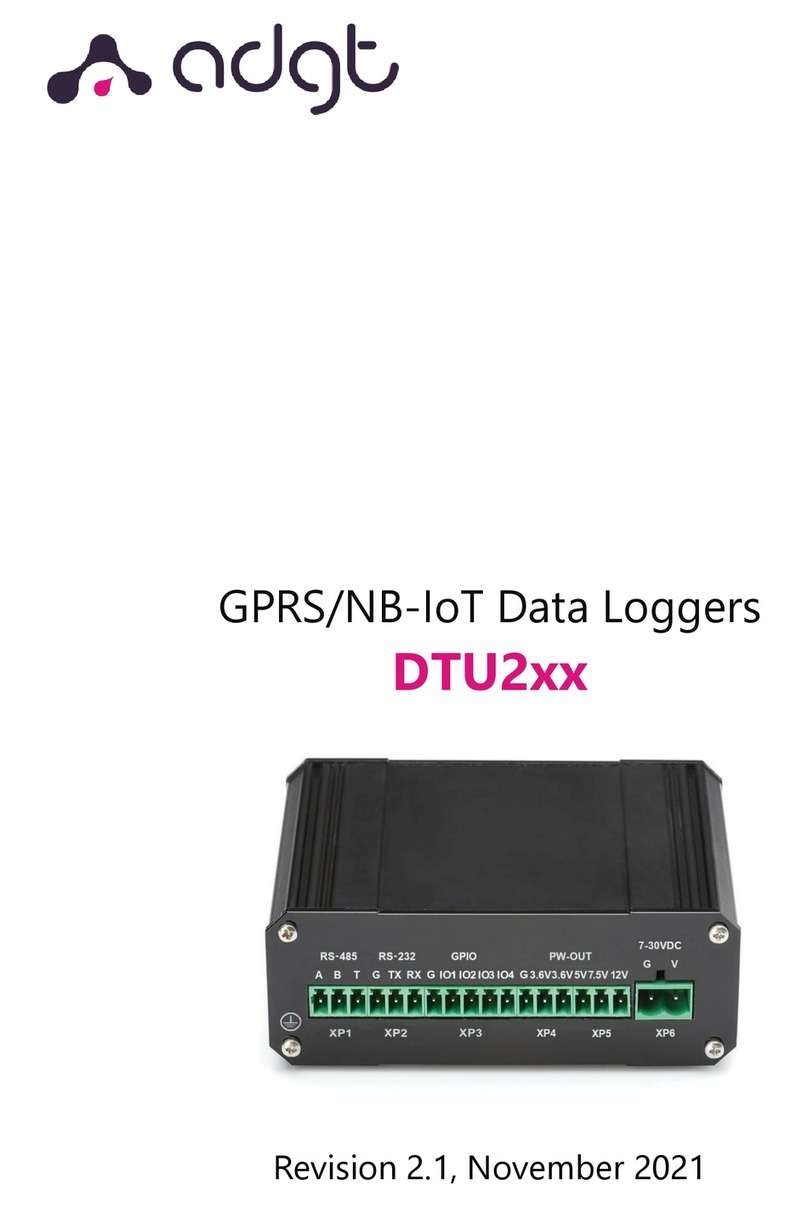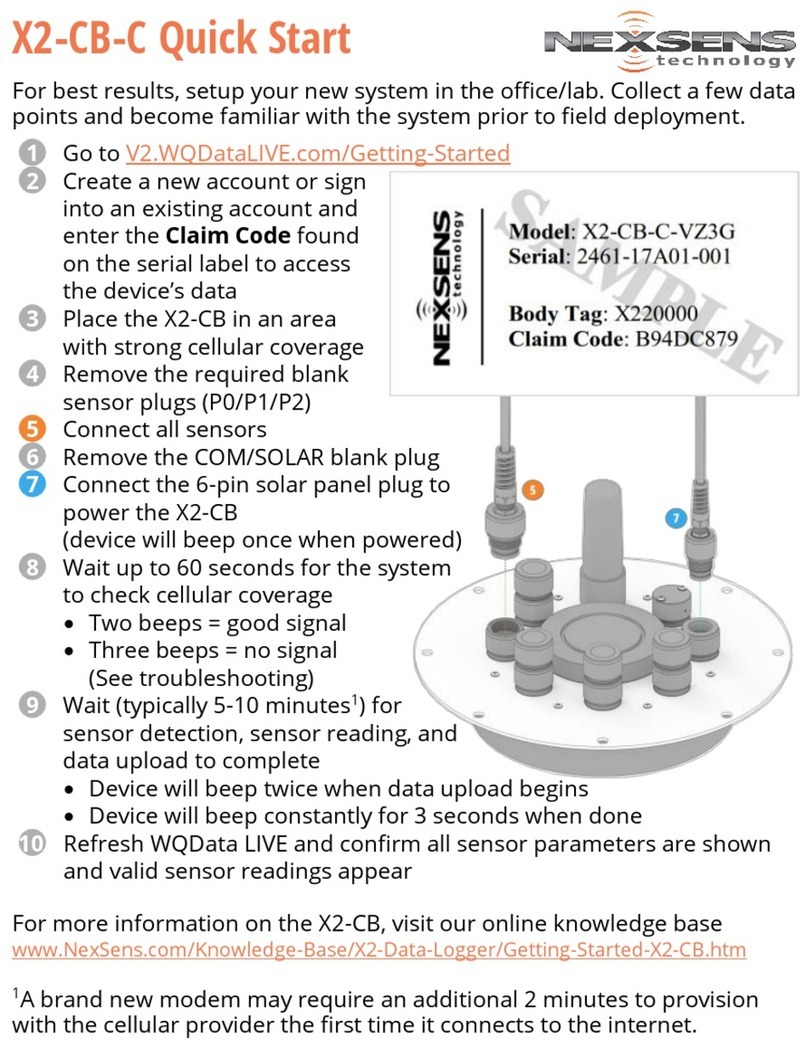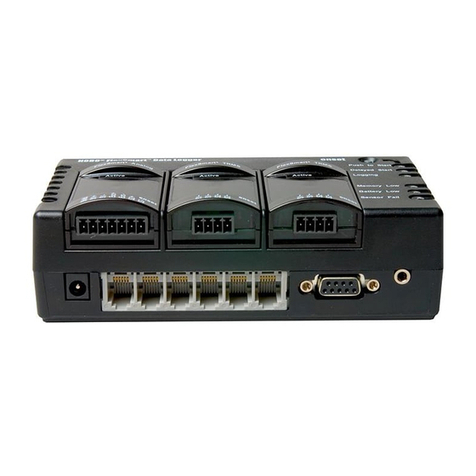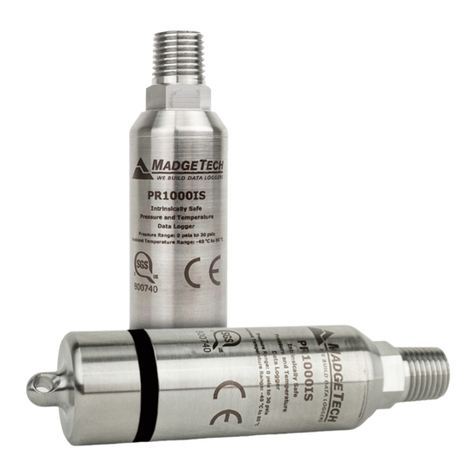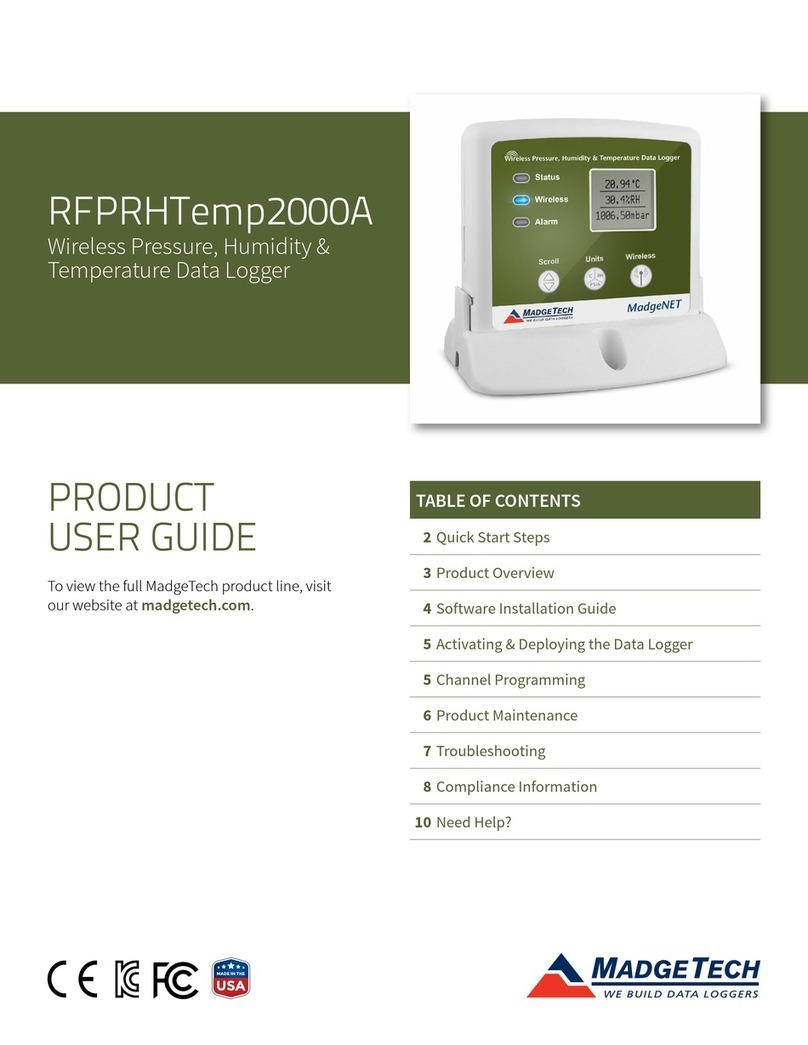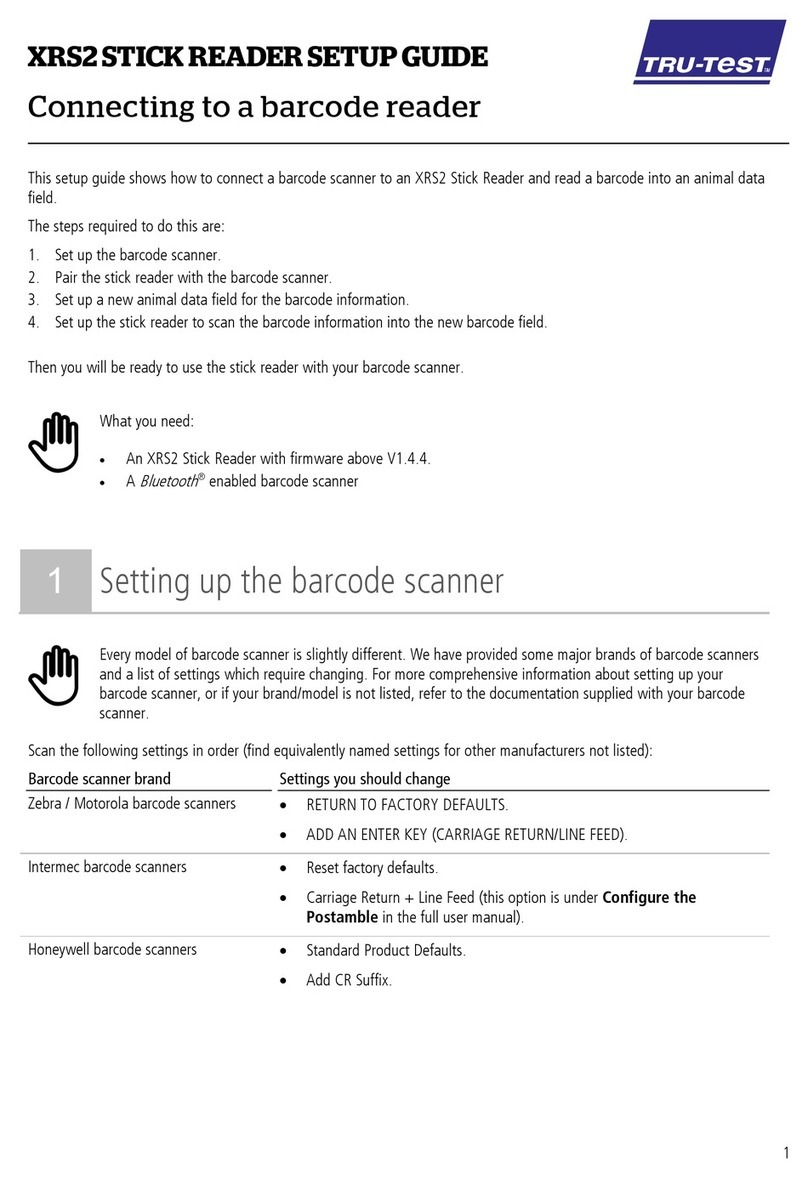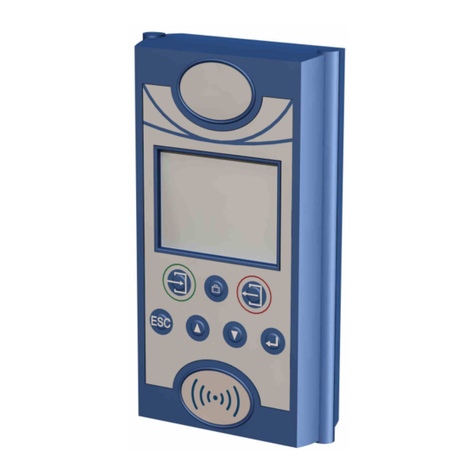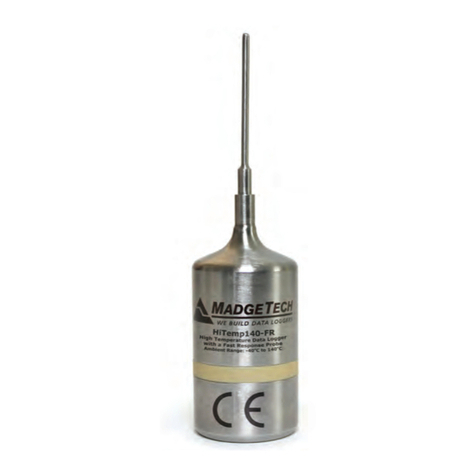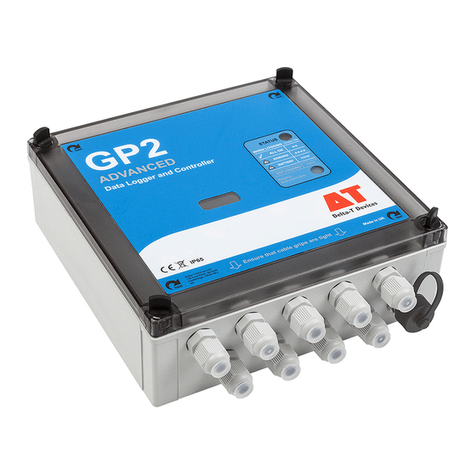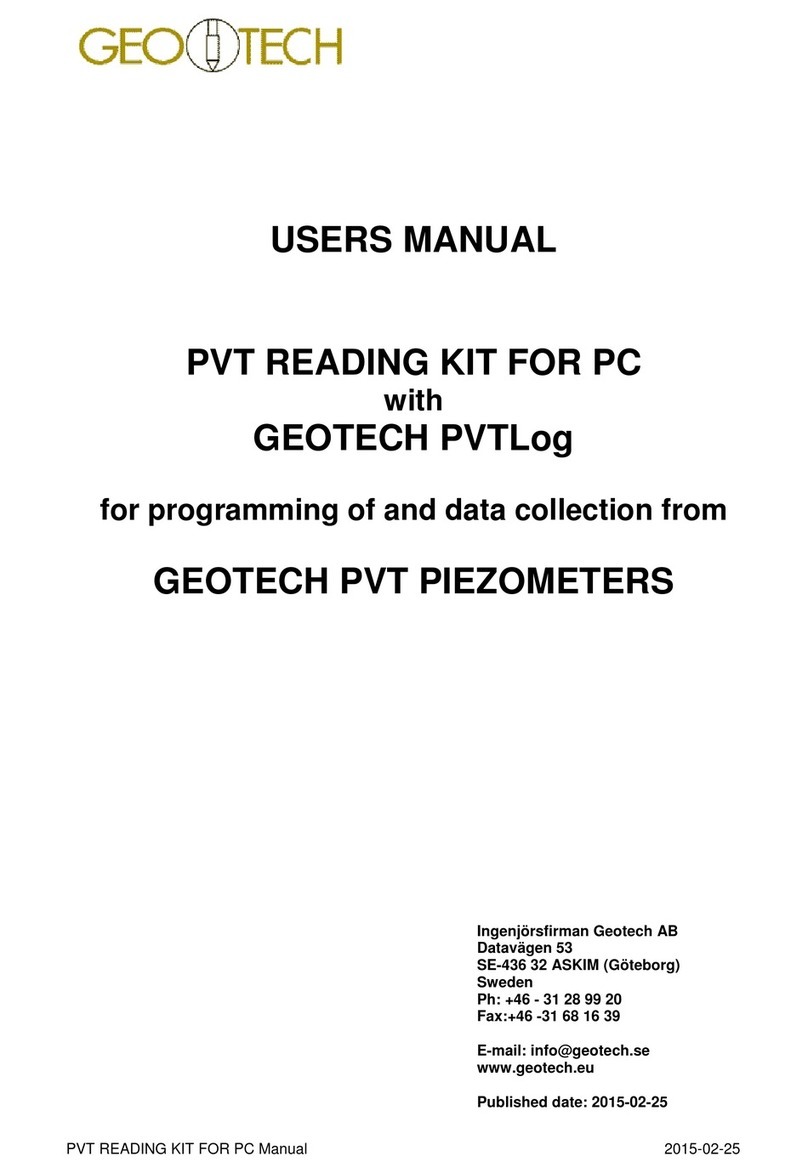ADGT DTU4 0 Series User manual

GPRS/NB-IoT Data Loggers
DTU4x0
User Guide
Revision 2.01, May 2022

DTU4x0 GPRS/NB-IoT Data Loggers
User Guide. r. 2.01 | 2022-05-17
DTU4x0 GPRS/NB-IoT Data Loggers
User Guide (revision 2.01, May 17th, 2022)
This manual is targeted for users responsible for installing, configuring and technical maintaining the
DTU410, DTU420 data logger series (hereinafter referred to as DTU or data logger). The guide contains
information about the intended purpose, design, technical parameters and operating principles of the
device.
ADGT systems s.r.o. reserves the right, without any prior notice, to make changes to the user manual
related to the improvements in hardware and software, as well as to eliminating misprints and inaccuracies.
Safety Symbols Information
The following safety symbols are used in the document. Familiarize yourself with the symbols before
installing and operating the device:
WARNING!
Denotes a hazard. It calls attention to a procedure, which if not correctly performed or
adhered to, could result in injury or loss of life. Do not proceed until the warning note is fully
understood.
CAUTION!
Denotes a hazard. It calls attention to the operation of the device, which if not correctly
performed or adhered to, could result in damage or destruction of the product.
Do not proceed until the attention note is fully understood.
NOTE:
Denotes some information which could help the user when operating with the device.
ADGT systems s.r.o
Planichkova, 442/3,
162 00, Prague 6, Prague, Czech Republic
The present document is the property of ADGT systems s.r.o.
Printing is authorized exclusively for private usage.

DTU4x0 GPRS/NB-IoT Data Loggers
User Guide. r. 2.01 | 2022-05-17
Safety Instructions
Do not use this product until you have read this User Guide and until you have a full knowledge of this
product mechanism, safety information and instructions.
CE WARNING!
•In a residential environment this product may cause radio interference. In such cases
users may be required to take adequate measures.
WARNING!
•Operating the data logger, including opening, repairing and testing, must be
performed only by qualified and properly trained personnel familiar with this device.
Input Voltage:
DTU4x0: DC Input voltage: 7-30VDC
DTU4x0-C: AC Input voltage: 100-240VAC, 50Hz/60Hz
Please note: The voltages beyond the operating range can cause damage and void
the warranty for this product.
•Do NOT remove the device cover for operating or servicing activities, if external power
supply is switched ON. Make sure to power OFF the external power supply before
opening the case cover. For safety reasons, after disconnecting the external power
supply, wait for 1 second before opening the case cover.
•Turn ON the external power supply, only after all the circuits are connected and the
data logger case cover is closed and securely screwed to the base of the case.
•The device (its antenna) should be installed at a minimum separation distance of
20 cm from people or animals.
•Do NOT use the device in explosive or hazardous environments.
•Do NOT expose your device to any extreme environment where the temperature or
humidity is high. Such exposure could result in damage to the device or fire. Use each
product within the rated range for ambient operating temperature, ambient operating
humidity, and storage temperature specified for that Product.
•Do NOT disassemble the device unless you are qualified as service personnel.
•Do NOT dispose electronic equipment as unsorted municipal waste. Please use a
separate collection facility or contact the supplier from which this instrument was
purchased.

DTU4x0 GPRS/NB-IoT Data Loggers
User Guide. r. 2.01 | 2022-05-17
Contents
Safety Symbols Information...............................................................................................................................2
Safety Instructions................................................................................................................................................3
1. Product Overview..............................................................................................................................................5
Product Description....................................................................................................................................................... 5
Technical Specifications................................................................................................................................................ 6
Appearance....................................................................................................................................................................... 8
DTU4x0 Interfaces and Wiring Diagrams.............................................................................................................10
DTU4x0 Operating Modes.........................................................................................................................................13
LED Indication................................................................................................................................................................14
Collection and storage of information .................................................................................................................15
Algorithm of data logger connection...................................................................................................................15
SIM card operation ......................................................................................................................................................15
Operating in NB-IoT network...................................................................................................................................15
Backup battery power supply ..................................................................................................................................15
2. Getting Started................................................................................................................................................ 16
Preparing for Installation...........................................................................................................................................16
Installation and Connection......................................................................................................................................17
Firmware Update ..........................................................................................................................................................22

DTU4x0 GPRS/NB-IoT Data Loggers
User Guide. r. 2.01 | 2022-05-17
1. Product Overview
Product Description
DTU4x0 – a series of 11-channel mobile data loggers
designed for remote smart metering and monitoring
applications in utility industries.
Key Features:
•Automated data collection from pulse output
meters, meters with RS-232 & RS-485 ports
as well as from a wide range of sensors.
•Data storage in non-volatile memory.
•Data transfer to a remote server over GPRS or
NB-IoT network according to the schedule.
•Date and time regular automatic synchronization.
•Dual SIM for communication channel reservation.
•3.6V, 5V, 7.5V and 12V outputs for powering external sensors.
•Quick and easy device configuration: via PC as well as remotely using web interface.
•IOT24.eu cloud software for remote 24/7 access to data via a convenient web interface.
•Power supply: both external and autonomous from a backup replaceable 3.6 V battery to
provide data logger operation up to 4 years and above.
The base model range is represented by the following models:
Model
Network
Protocol
Power Supply
DTU410
GPRS
TCP
7-30 VDC + 13Ah D-type 3.6V backup battery
DTU420
LTE NB-IoT
TCP/UDP
7-30 VDC + 13Ah D-type 3.6V backup battery
Base models can be supplied with the set of
available options:
•Hardware – minor hardware changes.
•Assembly - indicate a replacement or
absence of battery, antenna or case.
Options are added to the name of the base model
in the following sequence:
Base
Model
–
hyphen
Hardware
options
.
dot
Assembly
options
Example of a modification name – DTU410-CG.S
Within each group of options, the letters go alpha-
betically. If the letters of the option group are not
present in the model’s name, then the next option
group takes its place. If no option is specified, then
we have the base model (see figure on the right).

DTU4x0 GPRS/NB-IoT Data Loggers
User Guide. r. 2.01 | 2022-05-17
Technical Specifications
DTU410
DTU410-C
DTU420
DTU420-C
POWER SUPPLY
Main power supply source
7-30VDC
100-240VAC
50Hz/60Hz
7-30VDC
100-240VAC
50Hz/60Hz
Max. power consumption
5W1
5W1
1W1
1W1
Connector
2-pin screw terminal block, pitch – see DTU4x0 power supply terminal block contacts
Backup power supply
source
Li-SOCL2 D-type ER34615M battery, 3.6V 13 000 mAh - for base models.
For optional modifications, see available options
Current consumption in a
sleep mode (when
powered by battery)
10 µA (at 2 Hz polling rate), 40 µA (at 20 Hz polling rate),
150 µA (at 100 Hz polling rate)2
Current consumption in
data transfer mode (when
powered by battery)
150 mA2
36 mA2
Battery life
Up to 4 years3
Up to 8 years3
CELLULAR NETWORK PARAMETERS
Module frequency range
GSM/GPRS 850/900/1800/1900
NB-IoT B1/B2/B3/B5/B8/B12/B13/B17/B18
B19/B20/B25/B26/B28/B66/B70/B71
Max. power output
33dBm (850/900 MHz)
30dBm (1800/1900 MHz)
23dBm
Data transmission
technology
GPRS class: configured 8/10/auto (up to 12)
NB-IoT Cat NB2
Data transmission rate
up to 85.6 kbps (DL/UL)
100 kbps (DL) / 150 kbps (UL)
Protocol Stacks
IPv4 TCP
IO PARAMETERS
GPIOs (P1-P4)
x4: operating modes - pulse counter; high-frequency (HF) pulse counter (up to 5kHz);
two-state signal input; leakage sensor; opening sensor, engine hours counter;
1-Wire; current loop 4-20mA sensor; temperature sensor.
Counting inputs (P5-P10)
x6: operating modes – pulse counter, HF pulse counter (up to 5kHz);
two-state signal input; leakage sensor, temperature sensor, engine hours counter.
Additional Input (P11)
x1: type - pulse counter, leakage sensor (S+, S- contacts)
Pulse input polling
frequency3
2Hz: pulse duration – more than 500ms, max. pulse frequency at the input – 1Hz;
20Hz (default): pulse duration – more than 50ms, max. pulse frequency at the input – 10Hz;
100Hz: pulse duration – more than 10ms, max. pulse frequency at the input – 50Hz
Input conditions
closed, open, short circuit, break
Connector type
screw terminal block, pitch - 5.0 mm
Unit of measured value
pulse, ohms, mA, °C, ppm
Pulse counting range
0 - 232
Relative error of pulse-
counting (per 10000 pulses)
±0,01%
1
Without taking into account the load at the 12V and 7.5V power outputs.
2
If all inputs are configured as counting and the 12V and 7.5V power outputs are turned off.
3
When operating at a temperature not higher than 0°C, with a stable communication signal, in the connection mode 3 times
amonth. Battery service life depends on a number of factors, including operating temperature, type of connection and frequency
of connections. ATTENTION! Increasing the polling frequency results in a shorter battery life.

DTU4x0 GPRS/NB-IoT Data Loggers
User Guide. r. 2.01 | 2022-05-17
DTU410
DTU410-C
DTU420
DTU420-C
Input resistance
measurement range
0 – 100 kOhm
The line is working properly: open state -3-100 kOhm, closed state - 1-3 kOhm
The line is faulty: line is broken - more than 10 kOhm, short circuit - 0-1 kOhm
4-20 mA
current loop mode
Accuracy: 2% (t=22ºC), max - 5% (in the operating temperature range).
Warm-up time - 60 sec
OTHER PORTS & CONNECTORS
Serial ports
1 x RS-232: non-isolated, Rx, Tx, GND signals. Default speed -19200 bps (8N1)
1 x RS-485: non-isolated, A+, B- signals. Default speed - 19200 bps (8N1).
Load capacity – up to 32-unit load (UL) devices. 1/2UL = 24kOm.
Maximum communication range - up to 1000 m
Power outputs
2 x 3.6V (ENABLED by default)4
Software configurable outputs:
1 x 5V (DISABLED by default). Enabled when the ‘1-Wire’ input is activated (DS18B20)
1 x 7.5V (DISABLED by default). Enabled when the ‘Current loop’ input is activated.
1 x 12V (DISABLED by default). Enabled when the ‘Current loop"’ input is activated.
DTU opening sensor
1 x button
SIM
2 x mini-SIM (2FF)
USB
1 x mini-USB B
Antenna/Connector
DTU4x0: internal flexible antenna 2-5.2dBi on the u.Fl connector + SMA-f connector;
DTU4x0.F: u.Fl connector + SMA-f connector
DEFAULT SETTINGS
Data slice saving
once per hour
Readings transfer to server
once/day, from 08.00 to 09.00
IOT24.eu server
IP address/server port5
iot24.eu:10002 (GSM)
139.162.147.141:10003 (NB-IoT)
Server connection
on schedule; when pressing configuration button (S2);
on event at facility (short circuit, break); on reboot
Time synchronization
each connection to server
Data Storage
up to 90 000 entries from 10 meters
GENERAL SETTINGS
Dimensions (L x W x H)
149 x 121 x 87 mm
Weight
no more than 530 g
Enclosure
Plastic, protection class – IP65
Archive depth
10 years (hourly logging)
Data storage in non-
volatile memory
up to 90 000 entries from 10 meters
Time accuracy
5 sec/day
Average service life
10 years
OPERATING CONDITIONS
Operating temperature
-20...+50°C6
Relative air humidity
up to 100% at 25°C
Atmospheric pressure
84-106.7 kPa (630-800 mmHg)
4
3.6V power is supplied programmatically, by pulses, with an input polling frequency.
5
For GPRS devices, use a domain name to connect to the server. For NB-IoT devices, use only the IP address.
6
When operating from battery at temperatures below 0°C, the battery life could be shorter.

DTU4x0 GPRS/NB-IoT Data Loggers
User Guide. r. 2.01 | 2022-05-17
Appearance
DTU4x0 is a single-board microcontroller device in a sealed plastic IP65 case.
DTU410, DTU420 (7-30 VDC power supply)
DTU410-C, DTU420-C (100-240 VAC power supply)

DTU4x0 GPRS/NB-IoT Data Loggers
User Guide. r. 2.01 | 2022-05-17
DTU4x0 terminal block contacts
Connector
Contact
Description
Upper Terminal blocks
Terminal block
J8 (2-pin)7
S+
Positive input for connecting the leakage sensor
P11
S-
Counting input / Negative input for connecting the leakage sensor
Terminal block
J9 (3-pin)7
RS-485
A
A+ signal, RS-485 line
B
B- signal, RS-485 line
T
Built-in terminal resistor output (in order to commute terminal resistor,
T-output should be connected to the B- output of RS-485 port)
Terminal block
J18 (2-pin)7
RS-232
GND
Ground
TX
RS-232 interface TX data output
Terminal block
J3 (2-pin)7
RX
RS-232 interface RX data input
INPUTS
P5
Universal counting/signal input 5
Terminal block
J4 (3-pin)7
P6
Universal counting/signal input 6
P7
Universal counting/signal input 7
P8
Universal counting/signal input 8
Terminal block
J5 (3-pin)7
P9
Universal counting/signal input 9
P10
Universal counting/signal input 10
Vout
3.6V
3.6V power output8
Lower Terminal blocks
Terminal block
J2 (3-pin)7
GND
Ground
GPIO
P1
Universal GPIO 1
P2
Universal GPIO 2
Terminal block
J1 (2-pin)7
P3
Universal GPIO 3
P4
Universal GPIO 4
Terminal block
J14 (2-pin)7
Vout
GND
Ground
3.6V
3.6V power output8
Terminal
block J15
(3-pin)7
5V
5V power output (software configurable)
7.5V
7.5V power output (software configurable)
12V
12V power output (software configurable)
DTU4x0 power supply terminal block contacts
Model
Connector
Contact
Description
7-30 VDC power terminal block
DTU410,
DTU420
Terminal block
J13 (2-pin)7
7-30
VDC
+
7-30 VDC positive input
–
7-30 VDC negative input
100-240 VAC power terminal block
DTU410-C,
DTU420-C
Terminal block
J12 (2-pin)9
100-240
VAC
N
Neutral input of power supply voltage 100-240 VAC
L
Line input of power supply voltage 100-240 VAC
3.6V Battery power supply terminal block
All DTU4x0
models
Terminal block
J10 (2-pin)10
BAT
–
Negative battery terminal
+
Positive battery terminal
7
Connector type is a screw terminal block (pitch - 5.0 mm).
8
3.6V power is supplied programmatically, by pulses, with an input polling frequency.
9
Connector type is a screw terminal block (pitch - 5.08 mm).
10
Connector type is a screw terminal block (pitch - 3.81 mm).

DTU4x0 GPRS/NB-IoT Data Loggers
User Guide. r. 2.01 | 2022-05-17
DTU4x0 Interfaces and Wiring Diagrams
GPIO & Universal Inputs
DTU4x0 data loggers have 11 universal counting inputs for connecting a wide range of meters and sensors:
•P1-P4 – independent GPIO lines
•P5-P11 – universal counting inputs.
Inputs can be configured via the web interface of https://iot24.eu cloud software as well as using DTU
Configuration Tool software. Types of devices available for connection to P1-P11 inputs are given below:
Type of device/Input Type
P1
P2
P3
P4
P5
P6
P7
P8
P9
P10
P11
Pulse counter
•
High-frequency pulse counter
•
•
•
•
•
•
•
•
•
•
–
Signal (two-state) input
•
•
•
•
•
•
•
•
•
•
–
Leakage sensor
•
•
•
•
•
•
•
•
•
•
ADGT temperature sensor
•
•
•
•
•
•
•
•
•
•
–
Engine hours sensor
•
•
•
•
•
•
•
•
•
•
–
DTU case opening sensor
•
•
•
•
•
•
•
•
•
•
–
1-Wire
•
•
•
•
–
–
–
–
–
–
–
Current loop (4-20mA) sensor
•
•
•
•
–
–
–
–
–
–
–
•- types of devices supported for this input
✓- the type of device configured on this input by default
−- types of devices that are not supported for this input
Connecting meters
The following types of inputs can be configured to connect meters:
•Counting/Pulse counter – the type of input used when connecting pulse reed switch meters
to data logger, as well as meters with NAMUR output. The inputs are configured to connect
meters with polling frequency at outputs up to 100 Hz.
•High-frequency meter (or HF pulse meter) – the type of input used when connecting pulse
meters with an input polling frequency from 100 Hz and up to 5 kHz to data logger.

DTU4x0 GPRS/NB-IoT Data Loggers
User Guide. r. 2.01 | 2022-05-17
Connection. An example of a possible connection of meters to the data logger is given in figure above.
One wire of the meter is connected to one of P1-P10 inputs. The other wire is connected to 3.6V power
output. The polarity is not important when connecting wires.
Depending on the type of the meter, data logger will record 2 or 4 states at the inputs:
−closed, open - if the meters are not equipped with a NAMUR circuit.
−closed, open, short circuit (SC), open circuit - for meters with a NAMUR output.
NOTE:
•When setting up data logger, you need to select the input type: Pulse counter or HF pulse counter
•For Pulse counter input, it is necessary to adjust threshold resistance values at the input. When
selecting HF pulse counter input type, it is not necessary to set up a threshold resistance value, it
will be adjusted automatically.
Connecting sensors
The following types of inputs are available for connecting sensors:
•Signal - the type of input used when connecting to DTU two-state sensors measuring
resistance (temperature sensors, leakage, magnetic impact, etc.). Threshold values of the
resistance in closed and open states for this input type are set manually.
•Leakage sensor - the type of input used when connecting ADGT leakage sensor to data logger.
Connection. The sensor has a two-wire connection scheme: one wire is connected to any of
the P1-P11 (“–”) contacts, and the other to 3.6V (“+”) contact. Connection polarity is not
important. The sensor plate is placed where the leakage is most likely to occur.
•ADGT Temperature sensor - the type of input used when connecting ADGT temperature and
magnetic sensor to DTU. The sensor is designed to measure the temperature of the pipe
surface and detect external magnetic field.
Connection. Magnetic sensors are mounted on both sides of the water meter for high
accuracy in detecting the impact, and the temperature sensor is installed on the pipe. The
sensor is connected to the data logger in a two-wire scheme: one wire is connected to any
of the P1-P11 (“–”) contacts, and the second - to 3.6V (“+”) contact.

DTU4x0 GPRS/NB-IoT Data Loggers
User Guide. r. 2.01 | 2022-05-17
•1-Wire sensor - the type of input used when connecting an ADGT DS18B20 temperature
sensor to data logger. When the input is selected, a software configurable 5V power output
of the Vout terminal block becomes active and turns on with an input polling frequency.
The output can be configured as permanently active via DTU Configuration Tool software.
Connection. Combine red (power) and black (ground) wires together and connect to GND
contact of the GPIO terminal block. Connect the yellow DQ wire (data line) to any of the P1-
P4 pins. The sensor receives power from the data line (in "parasitic" mode).
•Current loop sensor – the type of input used when connecting 4-20 mA current sensors to
data logger. When this input is selected, a 100 Ohm load resistor is switched on at the input,
and the 12V and 7.5V power outputs of the Vout terminal block automatically become active
to enable power supply of current loop sensors. Outputs are software configurable. You can
configure them as permanently active via DTU Configuration Tool software.
The sensor can be connected in accordance with the following diagram:
−The sensor is powered from the built-in data logger power supply. The 4-20mA output of
the sensor is connected to any of the P1-P4 inputs, and the +Upow output is connected
to one of the DTU power outputs - 7.5V or 12V.
CAUTION!
Do not power 4-20 sensors from external power sources – it may cause damage of DTU input.
It is allowed to power the sensors only from the data logger according to a diagram above.

DTU4x0 GPRS/NB-IoT Data Loggers
User Guide. r. 2.01 | 2022-05-17
DTU4x0 Operating Modes
The device supports several operation modes:
Sleep (standby) mode
Low-power consumption mode, in which DTU collects data from metering devices and checks the state
of inputs. In the sleep mode, data logger works most of the time, and goes into connection mode only
according to the schedule, when setting up the device or in case of emergency situations.
NOTE:
When connected via USB, the device does not go into a sleep mode.
Server connection and data transfer mode
Data transmission from the DTU to a dispatching server occurs over the TCP protocol, which has a client-
server architecture. The device always works in the "Client" mode and independently establishes an
outgoing connection with the "Server” with the subsequent data transfer. The default server is
https://iot24.eu cloud software with access via the web interface.
Data logger establishes a connection with the server in the following cases:
•According to the established schedule for the transfer of accumulated readings. Within 2 minutes
after connecting, the device transmits data for the past period to the server, after which it goes into
a sleep mode until the next activation. If during one connection not all information is transmitted,
the rest of the data will be sent the next time you connect.
•In case of emergencies. Data logger sends alarm messages to the server in the event of a short
circuit, when the power has been switched from external to backup, when sensors are triggered,
when the polling rate at each of the inputs is exceeded.
•When turning on and rebooting the data logger.
•When pressing S2 button – data logger setup/connection to the server button.
•When a magnet is brought towards the case of data logger - DTU sends a message to the server.

DTU4x0 GPRS/NB-IoT Data Loggers
User Guide. r. 2.01 | 2022-05-17
Configuration mode
The device comes with pre-configured settings and does not require additional configuration. If necessary,
you can change settings remotely via the web interface of https://iot24.eu server or when connecting DTU
to a PC via USB using the DTU Configuration Tool software. When setting up data logger via PC, you
need to push S2 button on the board to switch to the configuration mode.
LED Indication
DTU4x0 data logger has three LED indicators:
•ST1 –external power state indicator.
•ST2, ST3 –server connection status and
data transmission status indicators.
LED indicators modes are presented in table below:
Function
Condition
Description
External power
connection
ST1 is ON
External power supply connected
ST1 is OFF
External power is not connected
Switching the device to con-
figuration/connection mode
by pressing S2 button
ST2 and ST3 flash 3 times
at the same time
The device has entered the configuration/
server connection mode
Server connection and data
transfer mode
ST3 flashes 1 time
every 3 seconds
The device has registered
in a GSM or NB-IoT network
ST2 flashes 1 time
every 3 seconds
Initializing the connection to the server
ST2 and ST3 flash
simultaneously
Connection to the server via TCP (UDP) estab-
lished / data transmission is in progress
ST2 and ST3 flash
alternately for 3 seconds
All data was transferred during the session.
The indication is triggered at the end of the con-
nection session if the connection was established
by pressing the S2 button.

DTU4x0 GPRS/NB-IoT Data Loggers
User Guide. r. 2.01 | 2022-05-17
Collection and storage of information
To store data, a non-volatile memory (Flash) chip is installed on the board, which stores the following
service and diagnostic information:
•accumulated readings (number of pulses);
•firmware version;
•event log: history of SW and HW restarts, S2 button clicks, information about faults at the inputs.
Algorithm of data logger connection
When setting up the schedule, the connection time is set in the "hh" format (hh - hours, minutes are not
set), however, if a large number of data loggers establish a connection at the same time, it may cause a
heavy load on the server. In order to reduce the load, each device connects to the server with a delay of
several minutes ahead of the specified hour. The delay has a fixed value, which is calculated based on
the IMEI number of the connected DTU and can range from 0 to 60 minutes (not more than 60 min).
SIM card operation
DTU4x0 has two SIM card slots with the ability to configure an active card and support for automatic
switching between cards if there is no connection on one of the cards. Setting the priority of SIM cards is
performed only via DTU Configuration Tool software when data logger is connected to a PC.
SIM operation modes:
•Auto (default) – in this mode, DTU registers on SIM card, on which the connection was successfully
established earlier (when first turned on – on SIM1). If registration fails, data logger automatically
switch to another SIM and in case of successful connection remains on it.
•SIM1/SIM2 – in this mode, a specific SIM card is selected as an active one. If the connection fails,
data logger will not switch to another SIM. The option Enable SIM-card activity control does not
work for this mode.
Operating in NB-IoT network
In order to connect to the NB-IoT network, you need to set a PLMN (public land mobile network) –
a5-digit mobile network service area code which you can find out from your mobile provider. The PLMN
code can only be set via DTU Configuration Tool software, on the System tab, in the Operator line.
Backup battery power supply
DTU4x0 data loggers are powered from an external 7-30 VDC source.
DTU4x0-C data loggers have a built-in PSU and operate from the 100-240 VAC mains.
Additionally, DTU4x0 have a built-in Li-SOCL2 3.6V battery,
which provides backup power supply and device operation
in an autonomous mode, when external power is
disconnected. Backup battery is user replaceable.
Battery power is enabled by installing a special jumper
(included in the package) on the JP1 connector. When the
external power is turned off, data logger immediately
switches to battery power. When the external power is
restored, the battery power is turned off.

DTU4x0 GPRS/NB-IoT Data Loggers
User Guide. r. 2.01 | 2022-05-17
2. Getting Started
Preparing for Installation
WARNING!
•DTU410-C, DTU420-C can be connected directly to a 100-240V mains. Since the device does
not have its own power switch and can be installed into hard-to-reach places, for safety
reasons, equip the device with an external power-off switch. It should be placed in an easily
accessible place and its designation should be visually accessible and easily identified by the
function performed.
•All installation works should be performed with external and battery power supply disabled!
•Power supply should be switched ON only after all the wires are connected!
1. Before starting the installation, you should add your data logger(-s) to https://iot24.eu cloud
server by the IMEI number and PIN code (see on the label of the case):
My projects -> Project name -> Building name -> Add Data Logger.
CAUTION!
Data loggers DTU410-C, DTU420-C with
abuilt-in 100-240V power supply unit (PSU)
have electronic equipment safety CLASS II
and do not need further grounding.

DTU4x0 GPRS/NB-IoT Data Loggers
User Guide. r. 2.01 | 2022-05-17
2. Prepare for operation:
•DTU4x0 data logger - make sure there is no visible damage to the case and label.
•Meters and sensors
•You may need: wire-end ferrules for crimping stranded wires of meters; crimper.
Installation and Connection
1. Remove data logger case cover
by unscrewing four screws on the cover.
NOTE:
Inside you will see a battery power jumper,
in a plastic package. Put it aside, you’ll
need it later.
2. Insert SIM card (-s)
NOTE:
SIM slots are located under the battery, so the battery must be removed to install the SIM cards.
a) Cut a temporary plastic tie securing
the battery, and put the battery aside.

DTU4x0 GPRS/NB-IoT Data Loggers
User Guide. r. 2.01 | 2022-05-17
b) Open the SIM card locks by sliding the
metal clip downwards. Insert SIM cards
with the contacts facing down. Make
sure that the cards are inserted correctly
and close the locks by sliding the metal
clips upwards.
3. Place the battery back and fix it on the board with a new plastic cable tie (included):
Pull the cable tie through the two holes
in the middle of the board. We
recommend slightly bending the tip of
the cable tie to make it easier to pull it out.
Place the battery on the top of SIM slots.
Firmly fix the battery with a cable tie and
cut off the excess tale.
CAUTION!
We recommend that you check the SIM cards for operability BEFORE returning the battery to its
place and installing a new plastic tie.
Connect to iot24.eu server using battery
power supply. Install the jumper on JP1
connector and press S2 button.
On the server, in the Data Logger ->
Configuration section, the date and time
of pressing the button should appear in
the Last connected field.

DTU4x0 GPRS/NB-IoT Data Loggers
User Guide. r. 2.01 | 2022-05-17
4. Connect meters and sensors to P1-P11 contacts of the data logger
Wiring diagrams are presented in DTU4x0 Interfaces and Wiring Diagrams.
For pinouts see DTU4x0 terminal block contacts.
There are four cable glands on the case cover:
−A – the main, for meters and sensors
−B – additional, for meters and sensors
−C – for an external antenna cable
−D – for an external power cable.
The hole of cable gland A is closed with a
rubber plug. To insert cables into the plug, you
need to make an incision of the desired size.
The holes of cable glands B and C are closed
with blind plugs. To use these outlets, the plugs
should be removed and the cables sealed with
the self-adhesive insulation tape (included).
a) Slightly unscrew the swivel nut of the
cable gland and lead the cable inputs of
measuring devices through.
NOTE:
We recommend crimping the stranded
wires of the meters with wire ferrules
before connecting.
b) Insert wires into the corresponding
terminal connectors and tighten the
screws to fix the wires.
CAUTION!
−P1-P11 – contacts “–”
−3.6V – contacts “+”

DTU4x0 GPRS/NB-IoT Data Loggers
User Guide. r. 2.01 | 2022-05-17
5. Connect antenna to SMA-f connector (optional)
NOTE:
Base models already contain an internal flexible antenna mounted on the u.FL connector.
If you need a higher power antenna or if you purchased a model without an antenna (DTU410.F,
DTU420.F), you can install an external antenna on the SMA-f connector. In this case, the internal
antenna must be disconnected from the u.FL connector.
6. Connect the battery backup power supply (if needed)
Install jumper on JP1 connector.
Data logger will automatically detect the levels
and thresholds at the inputs, afterwards will
connect to https://iot24.eu server and transmit
the data to the server.
To track the beginning and end of data
transmission, see LED Indication.
7. Connect the external power cable to data logger
DTU410-C, DTU420-C (100-240 VAC power supply):
Connect the power wires to N and L pins of the ~230 VAC connector.
DTU410, DTU420 (7-30 VDC power supply)
Connect the 7-30 V power supply to the G and
V pins of 7-30VDC connector, observing the
correct polarity of the wires:
CAUTION!
For this type of power supply, the polarity of wires does not matter.
CAUTION!
Max. input voltage can not exceed 30V.
Reverse polarity will not cause damage,
but the data logger will not operate.
This manual suits for next models
5
Table of contents
Other ADGT Data Logger manuals
Popular Data Logger manuals by other brands
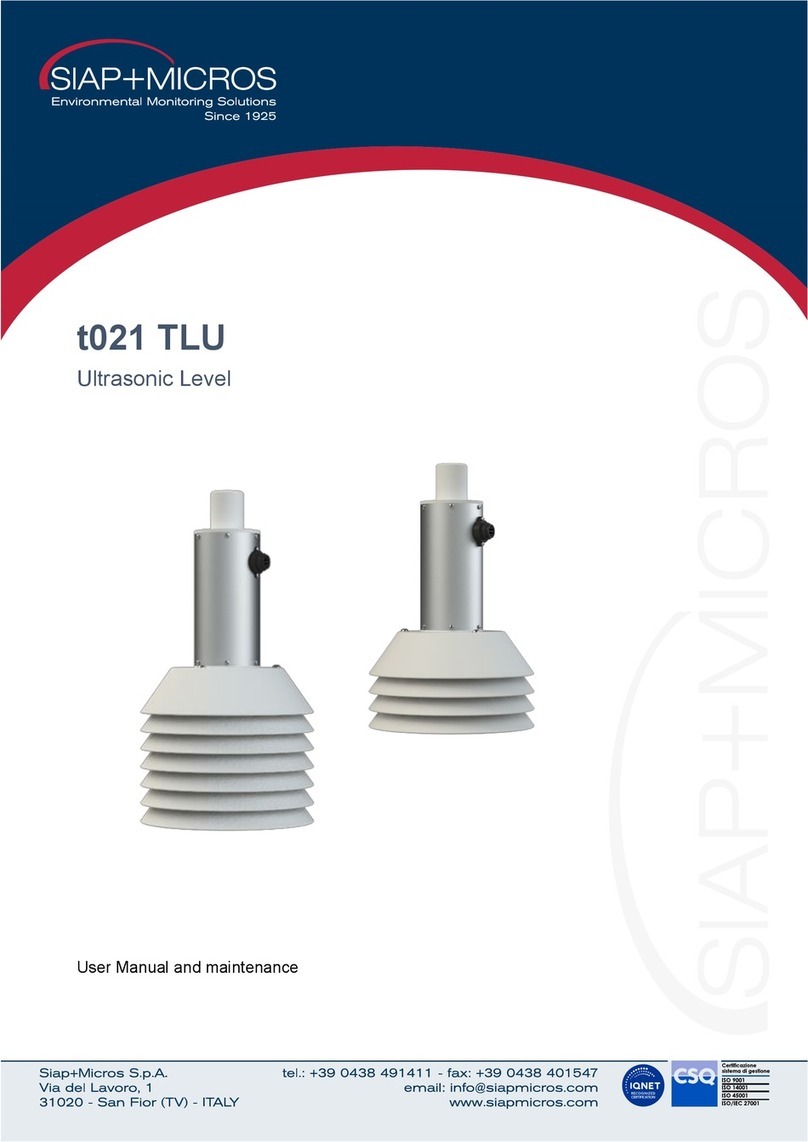
SIAP+MICROS
SIAP+MICROS t021 TLU User manual and maintenance

Geonics Limited
Geonics Limited EM61MK2A operating instructions
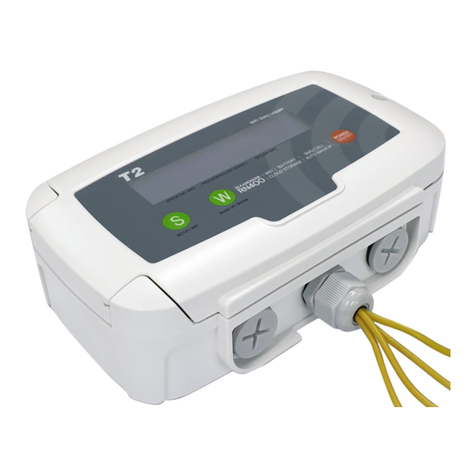
Radionode
Radionode RN400-T2CS user manual
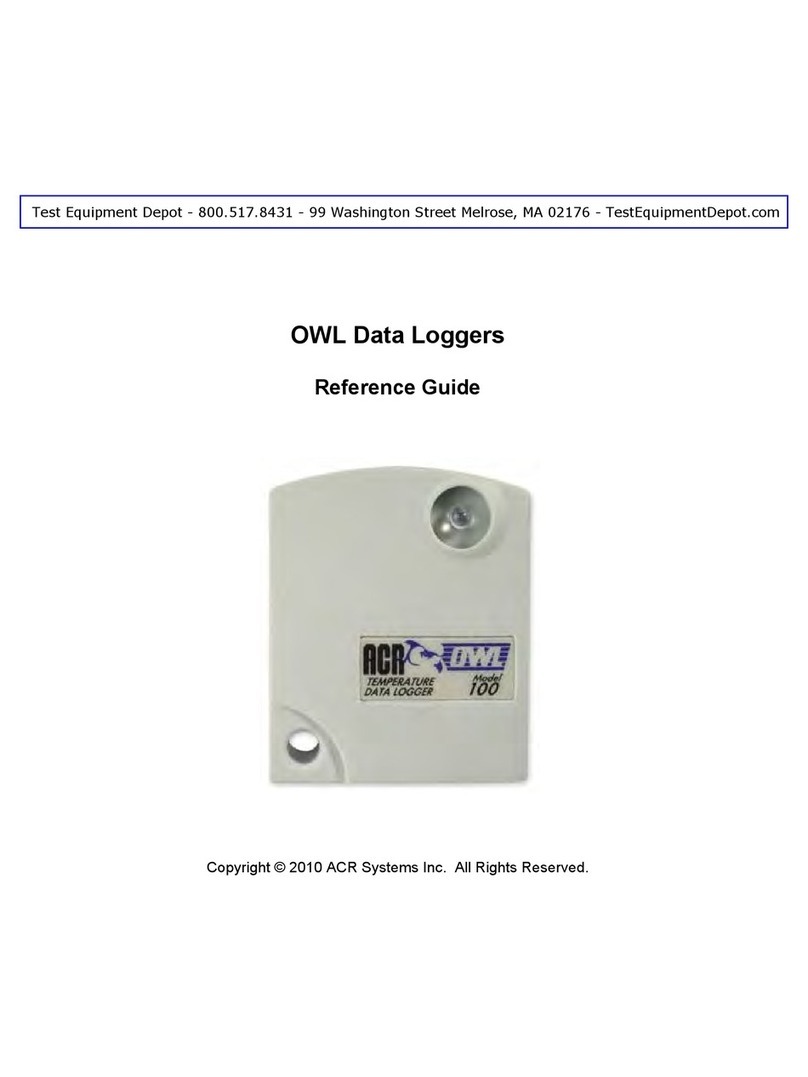
ACR Electronics
ACR Electronics OWL series reference guide
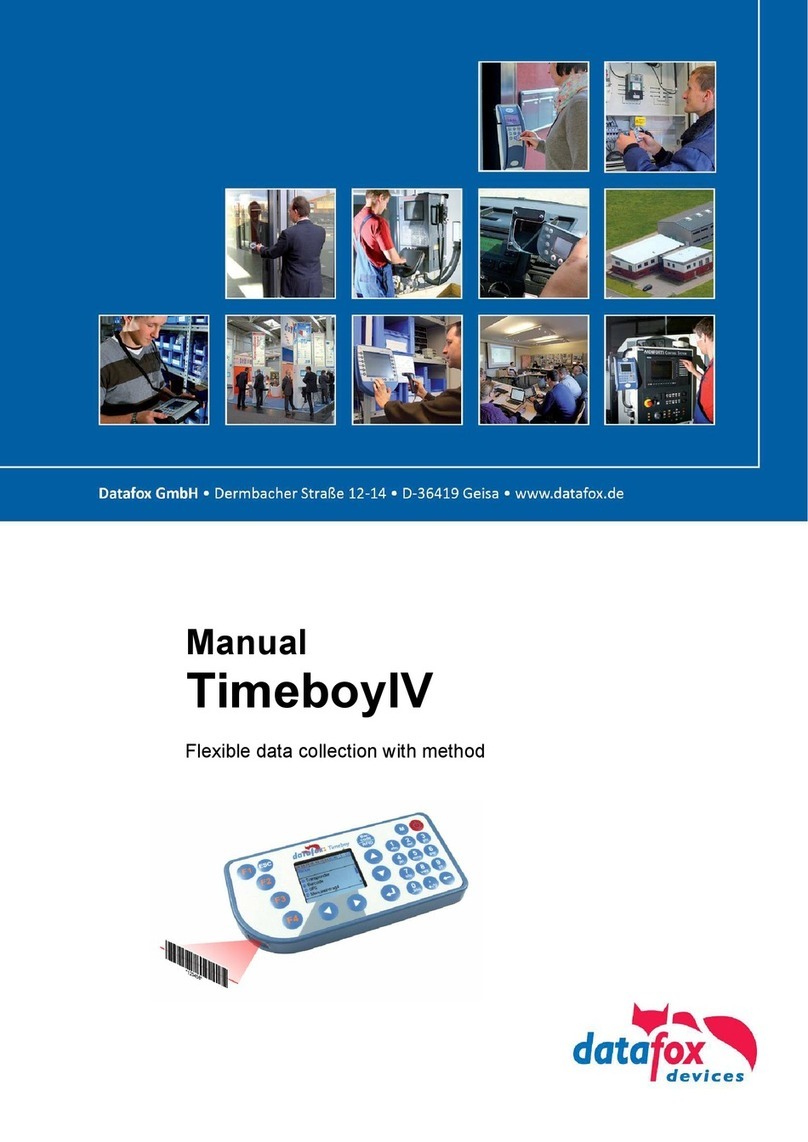
Datafox
Datafox TimeboyIV manual
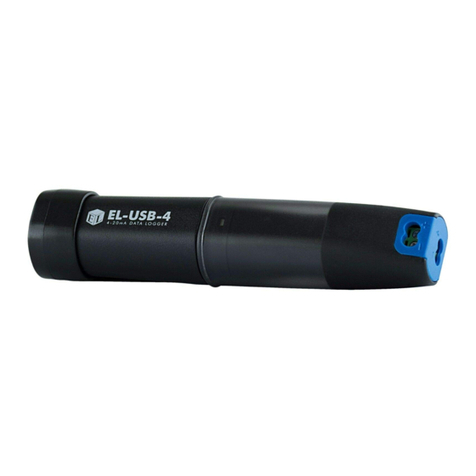
Lascar Electronics
Lascar Electronics EasyLog EL-USB Series Faq
